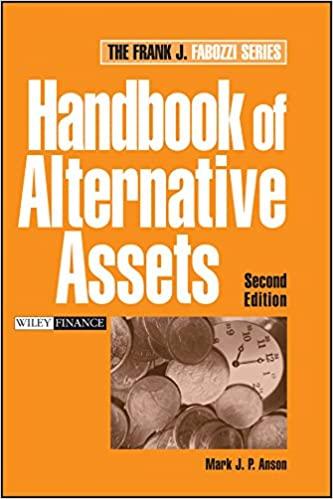PLEASE SOLVE IT IN 30 MINUTES THANKS!

Question 5. (10 marks) Gamma Co (Gamma) is considering an acquisition of Delta Co (Delta). The current financial year (year 0 ) is just about to conclude for both Gamma and Delta. Gamma is a publicly traded company and Delta is a private company. Gamma has 5 million shares outstanding, which trade for $15 per share. Delta has 3 million shares outstanding, but its shares do not trade on the stock market since it is private, and there is no market price available for Delta's shares. Since there is no market price for Delta's shares, Gamma decides to estimate the value of Delta using the discounted cash flow method. This year (year 0), Delta is expected to have $6 million in sales, which are expected to grow by 2% each year. Delta's EBIT margin has always been 40% of sales, and that is expected to continue in the future. Delta's depreciation and capital expenditures are expected to be 15% of sales. Delta's working capital is 10% of sales this year, and 10% of sales in future years. The tax rate is 30%. Delta has no debt. The riskfree rate is 4%, the market risk premium is 6%, and Delta's beta is estimated to be 0.8. After the acquisition, Gamma estimates that it would be able to cut costs by eliminating Delta's sales and general administrative expenses, which are estimated to be around 10% of sales each year. All cash flows occur at the end of the year. (a) What is the value of Delta as a stand-alone company, and the present value of the synergies from the deal? (Show all your work. Your answer must be handwritten.) ( 2 marks) (b) If Gamma pays $10 per share to acquire Delta, what is the value of the net benefit/cost to Gamma shareholders from the acquisition? Answer based only on the information provided. (Show all your work. Your answer must be handwritten.) ( 2 marks) (c) Gamma pays $10 per share to acquire Delta, but Gamma is now expected to be unable to cut any costs related to Delta's sales and general administrative expenses. What is the value of the net benefit/cost to Gamma shareholders from the acquisition? Answer based only on the information provided. (Show all your work. Your answer must be handwritten.) (2 marks) (d) If Gamma offers a Scrip bid for Delta, how many shares in Gamma would need to be offered for each share in Delta so that 70% of the gain goes to Gamma shareholders and 30% of the gain goes to Delta shareholders? Assume that Gamma is once again able to achieve the sales and general administrative expense reductions. Answer based only on the information provided. (Show all your work. Your answer must be handwritten.) (4 marks) Question 5. (10 marks) Gamma Co (Gamma) is considering an acquisition of Delta Co (Delta). The current financial year (year 0 ) is just about to conclude for both Gamma and Delta. Gamma is a publicly traded company and Delta is a private company. Gamma has 5 million shares outstanding, which trade for $15 per share. Delta has 3 million shares outstanding, but its shares do not trade on the stock market since it is private, and there is no market price available for Delta's shares. Since there is no market price for Delta's shares, Gamma decides to estimate the value of Delta using the discounted cash flow method. This year (year 0), Delta is expected to have $6 million in sales, which are expected to grow by 2% each year. Delta's EBIT margin has always been 40% of sales, and that is expected to continue in the future. Delta's depreciation and capital expenditures are expected to be 15% of sales. Delta's working capital is 10% of sales this year, and 10% of sales in future years. The tax rate is 30%. Delta has no debt. The riskfree rate is 4%, the market risk premium is 6%, and Delta's beta is estimated to be 0.8. After the acquisition, Gamma estimates that it would be able to cut costs by eliminating Delta's sales and general administrative expenses, which are estimated to be around 10% of sales each year. All cash flows occur at the end of the year. (a) What is the value of Delta as a stand-alone company, and the present value of the synergies from the deal? (Show all your work. Your answer must be handwritten.) ( 2 marks) (b) If Gamma pays $10 per share to acquire Delta, what is the value of the net benefit/cost to Gamma shareholders from the acquisition? Answer based only on the information provided. (Show all your work. Your answer must be handwritten.) ( 2 marks) (c) Gamma pays $10 per share to acquire Delta, but Gamma is now expected to be unable to cut any costs related to Delta's sales and general administrative expenses. What is the value of the net benefit/cost to Gamma shareholders from the acquisition? Answer based only on the information provided. (Show all your work. Your answer must be handwritten.) (2 marks) (d) If Gamma offers a Scrip bid for Delta, how many shares in Gamma would need to be offered for each share in Delta so that 70% of the gain goes to Gamma shareholders and 30% of the gain goes to Delta shareholders? Assume that Gamma is once again able to achieve the sales and general administrative expense reductions. Answer based only on the information provided. (Show all your work. Your answer must be handwritten.) (4 marks)







